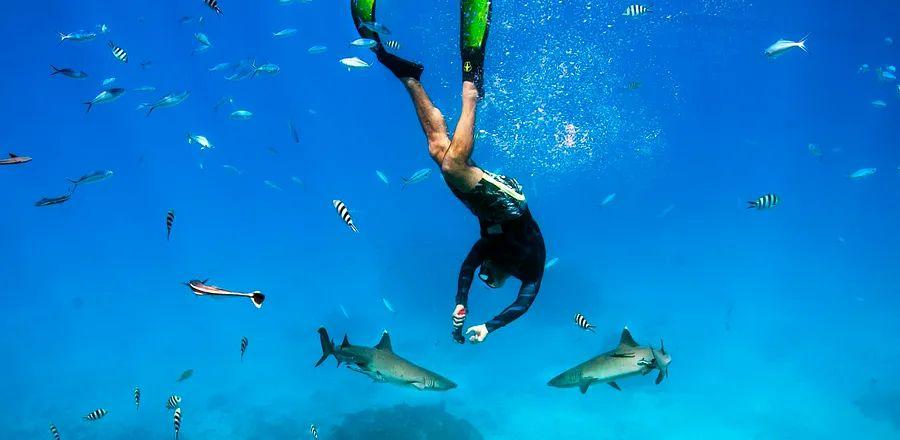In Fiji, an Exquisite Underwater Paradise Awaits

Fiji’s marine ecosystem is renowned for its breathtaking beauty, featuring a vibrant array of turtles, rays, and sharks gliding through sunlit greens and blues. The main attraction is its stunning coral reefs—fragile ecosystems where plants and fish engage in a daily, delicate dance, reflecting the challenges of our increasingly stressed environment.
Given the marvels of this underwater realm, it’s no wonder that hotels across the archipelago’s 333 islands are leading the charge in marine conservation. In the south, Kokomo Private Island collaborates with local nonprofit Manta Project Fiji to identify, tag, and safeguard manta rays in the surrounding azure waters. The resort also teaches guests how to swim and snorkel alongside these majestic creatures. Meanwhile, Six Senses Fiji planted 600 mangrove saplings in 2022, creating habitats for marine life and extending its ecological restoration efforts to protect terrestrial species like the Pacific boa snake and the critically endangered Fijian crested iguana.
Many resorts employ marine biologists on-site. At Vomo Island Resort, Laisenia Rokoua leads initiatives such as coral planting, species identification, and coastal cleanups. On this idyllic private island, children can craft coral “cookies” from concrete and fragments of living coral to be planted in the reef. The resort has also built small “fish houses” to shelter the reef’s smaller inhabitants.

Courtesy of Nanuku Resort
“I find immense joy in watching our guests engage in these hands-on activities that genuinely make a difference,” Rokoua shares. “It's fulfilling to contribute positively to the planet, knowing that something as simple as creating a coral cookie can help rejuvenate the ocean.”
During my visit to Nanuku Resort on Fiji’s largest island, Viti Levu, I witnessed some of these initiatives firsthand. Marine scientist and sustainability manager Kelly-Dawn Bentley demonstrated how delicate mangrove saplings are cultivated on-site and subsequently planted along the coastline near local villages. This allows communities to see how these carbon-sequestering plants act as protective barriers against storms. Seremaia “Jerry” Delana, the sustainability officer at Nanuku, snorkeled with me near the resort’s reef, highlighting parrotfish (which help manage algae growth) and the angular metal frames of coral nurseries, which may seem unusual but play a crucial role in supporting an ecosystem threatened by spear fishing, storms, and rising ocean temperatures.
As we floated with the currents, observing hopeful signs of newly planted coral fostering tiny fish, the absence of other tourists made the experience even more special. Relatively few travelers come to appreciate—and safeguard—Fiji’s natural beauty. (About 70,000 visitors came from the United States in 2022, compared to 7.7 million Americans who visited Hawai‘i. Overall, Fiji received just 636,000 inbound visitors in 2022.) This means you “won't have to be concerned about overtourism,” according to Josua “Josh” Cakautini, Nanuku’s friendly cultural ambassador. “There is ample space on our islands to accommodate everyone.”
Advice for planning your journey
- Consider a cruise: The 13-night itinerary “Fiji, Tonga, Cook Islands & Society Islands” from Paul Gauguin Cruises includes two stops in Fiji and a visit to the small Beqa Island, where exciting snorkeling experiences await.
- Must experience: Join in a kava ceremony, where a mildly intoxicating drink made from the Piper methysticum plant is shared among hosts and guests.
- Essential dish: Savor lovo, a traditional meal featuring chicken or pork and root vegetables wrapped in leaves and cooked over heated rocks in an underground pit.
To see our complete list of favorite destinations for this year, check out Where to Go in 2024.
Evaluation :
5/5



